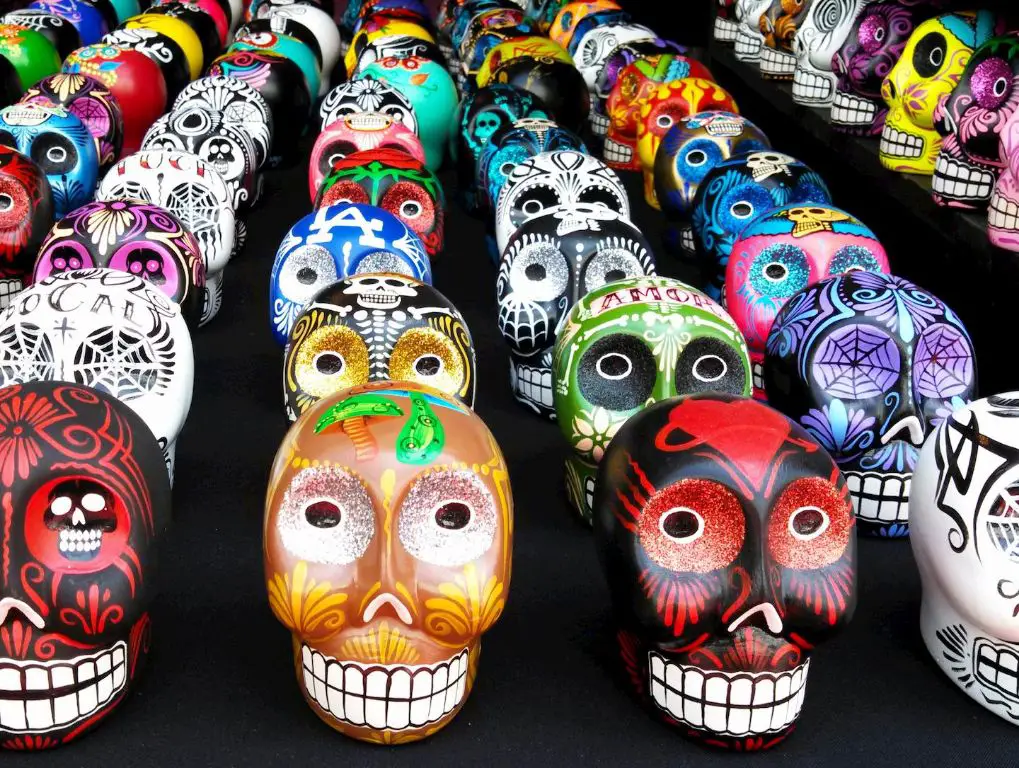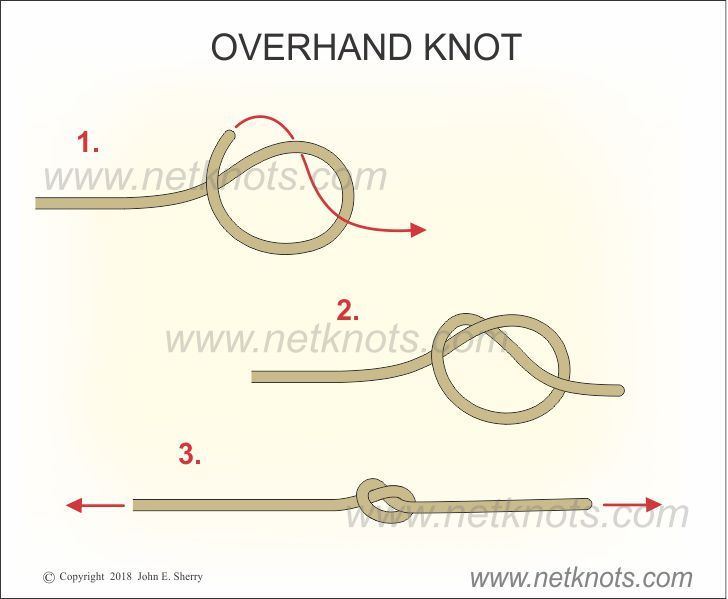What Do The Colors On A Sugar Skull Mean?
Sugar skulls, known as “calaveras de azúcar” in Spanish, are decorative skull-shaped items made from granulated white sugar.
Sugar skulls have their origins in Mexico’s Day of the Dead festival, or Día de los Muertos, an ancient Mesoamerican ritual that honored the lives of departed loved ones.
The tradition began in the pre-Columbian era when Mexicans kept skulls as trophies and displayed them to symbolize death and rebirth. Sugar skulls were created to acknowledge death as a natural part of life.
Today, sugar skulls carry a festive spirit and represent the sweetness of life. They are commonly used as decorations and symbolic offerings on Day of the Dead altars to honor deceased friends and family.
Symbolism of Sugar Skulls
Sugar skulls represent the soul of the departed. They are meant to be placed on an ofrenda, or altar, to welcome the return of the souls during the Day of the Dead celebrations. The sugar skulls are decorated with colorful icing and designs to represent the joyful spirit of the deceased.
The name of the departed is often written on the forehead of the sugar skull. This signifies that the treats are reserved specifically for that soul. Giving sugar skulls to both the living and the dead shows the interconnectedness of life and death.
According to Mexicansugarskull.com, “Sugar skulls represented a departed soul, had the name written on the forehead and was placed on the home ofrenda or gravestone to honor the return of a spirit to the world of the living on Día de los Muertos.”
Decorations and Colors
Sugar skulls feature vibrant decorations and colors that all have symbolic meaning. Common motifs include flowers, dots, spirals, and symbols of life and death. Each color has its own significance as well.
Flowers symbolize life and beauty. Marigolds in particular represent death and grief. Dots and spiral designs represent the cyclical nature of life, death, and rebirth.
The colors on sugar skulls represent:
- Red – Represents blood, life, passion, and Christian faith (Source)
- Pink – Femininity and celebration (Source)
- Orange – Sun and joy (Source)
- Yellow – Cempasúchitl flowers, which guide spirits back home (Source)
- Purple – Grief and mourning (Source)
- Black – Underworld and the unknown (Source)

The colors and decorations contain multitudes of symbolic meaning and connect the living with the dead.
Red Color
Red is one of the most prominent colors used to decorate sugar skulls. It has a deep symbolic meaning related to Day of the Dead. According to sources, red signifies life, blood, passion, energy, and love (source). For many, red represents the blood that flows through our bodies and gives us life. It is a vibrant color reminding us to live passionately. Additionally, red symbolizes the blood of Christ for Christians. Overall, red is meant to celebrate life and vitality when decorating sugar skulls for Dia de los Muertos.
Pink Color
The pink color on sugar skulls represents celebration, happiness and hope (Sugar Skull: History and Meaning of Day of the Dead Skull). Pink symbolizes the festive spirit of the Day of the Dead celebrations and the joy of remembering loved ones who have passed away.
Sugar skulls are decorated with bright, vibrant colors to represent life and vitality. The pink decorations convey the lively essence of the deceased. Pink designs stand out against the white base of the skulls to highlight the celebratory nature of this holiday.
While the Day of the Dead honors those who have died, it is not meant to be a sad occasion. Pink sugar skulls capture the happiness of families reuniting with the souls of lost loved ones. The pink hues remind us to cherish our memories and take joy in the time we shared with those who are gone.
Orange Color
Orange is a prominent color seen on sugar skulls. According to the Day of the Dead Holiday website, orange symbolizes the sun, light, and warmth https://dayofthedead.holiday/sugar-skull/the-meaning-and-importance-of-sugar-skulls/. The orange color is said to represent the vitality and energy provided by the sun. Just as the sun brings light and nourishment, the orange sugar skull celebrates the vibrancy of life.
The orange color on sugar skulls is often used to decorate the eyes or as flowers. This placement connects the orange hues directly to visions of sunlight. The bright orange tones bring a lively spirit to the sugar skull and emphasize the joy and radiance associated with the deceased’s memory.
Yellow Color
Yellow is one of the traditional colors used for decorating sugar skulls. According to 12News, yellow usually represents the spirit or radiance energy of the soul.
In Day of the Dead symbolism, the yellow color is often associated with marigolds, which represent death and grief. Marigolds, known as “flowers of the dead”, are commonly used to decorate altars and graves during Dia de los Muertos celebrations.
The vibrant yellow color evokes the joy and happiness of the departed souls. It symbolizes the light, brilliance, and illumination of the spirit world.
Purple Color
The purple color on sugar skulls represents grief, mourning, and loss. During Día de los Muertos, families remember and mourn loved ones who have passed away. The purple color acknowledges the sadness they feel over the death while also celebrating the deceased’s life.
Purple is associated with pain and suffering in many cultures. For example, in Christianity, purple symbolizes penance and mourning. During Lent and Advent, priests wear purple vestments as a sign of solemnity and sobriety.
In Mexican culture, the color purple is tied to grieving the loss of a loved one. Sugar skull altars and decorations feature the color purple to recognize the mourning process. The vibrant purple decorations contrast with the lively fiesta atmosphere to demonstrate the complex emotions people feel during Día de los Muertos.
While purple sugar skulls represent grief, they do so in a bright, decorative way. The purple is a visual reminder of mourning amidst the joyful memorial of the deceased’s life. With its rich meaning, the purple color is an integral part of commemorating Día de los Muertos.
Black Color
The black color on sugar skulls signifies the land of the dead or afterlife.1 In the Mexican tradition, black represents the gateway to the underworld and honors those who have passed on to the next life.
When sugar skulls feature black icing or decorations, it is meant to recognize the deceased’s journey into the realm beyond our physical world. The black color acknowledges their transition into the eternal afterlife according to the beliefs of Día de los Muertos.
Overall, the black elements pay tribute to the mystical place where departed souls reside. It reminds us that while the deceased are no longer with us on earth, they live on in spirit.
Conclusion
Sugar skulls are decorated with an array of bright colors, each with its own meaning. Red represents the blood of life, pink symbolizes celebration, orange signifies the sun, yellow means hope and attracts good spirits, purple stands for pain, grief, and mourning, and black evokes the mystery of the afterlife.
These vibrant colors and designs reflect the festive spirit of Dia de Los Muertos and the Mexican view of death as a natural part of life’s cycle to be embraced. The different hues and patterns contain multilayered significance, with connections to Aztec marigolds, Catholicism, family, food, and the cardinal directions. Sugar skull decorations represent the sweetness of life and the beauty behind remembering loved ones who have passed away.
Overall, the colors and symbols of sugar skulls carry deep cultural meaning for Mexicans during the Day of the Dead. They add beauty and joy to the holiday’s celebrations, while allowing families to honor their deceased in a positive spirit of reunion.




